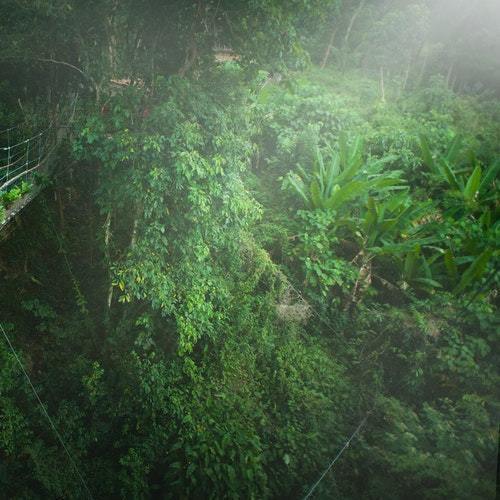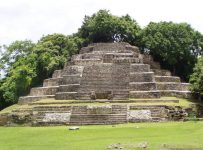Latin America pulses with a rhythm unlike anywhere else – a vibrant blend of ancient cultures, breathtaking landscapes, and cities that buzz with infectious energy. This region has blossomed into a premier destination for digital nomads, and the allure is undeniable. Lower living costs can stretch your budget further, diverse cultures enrich daily life, and the sheer variety of experiences – from Andean peaks to Caribbean shores – is staggering. With remote work becoming the norm for many, Latin America offers not just a place to log in, but a place to truly live. This guide dives into the continent’s most welcoming hubs, exploring what makes each city a potential perfect base for your remote work adventure in 2025.
Why Latin America attracts modern nomads
So, what exactly makes Latin America such a magnet for location-independent professionals? Firstly, affordability is a huge draw. Compared to North America or Western Europe, your money often goes significantly further here, allowing for a higher quality of life, more exploration, or simply easing financial pressures (as noted by travel experts). But it’s far more than just budget-friendly living. It’s the sensory richness: the explosion of flavours in the local cuisine, the kaleidoscope of colours in bustling markets, the warmth of the people, and the sheer diversity of landscapes inviting weekend adventures. Add to this improving infrastructure in many urban centres – think reliable internet and a growing network of co-working spaces – and convenient time zones for those working with North American companies. Crucially, many countries have recognized the value nomads bring, rolling out specific Digital Nomad Visas (DNVs). Nations like Colombia, Brazil, Ecuador, Argentina, and Uruguay are actively simplifying longer stays, signalling a clear welcome to the global remote workforce.
Exploring Latin America’s leading digital nomad cities
While countless corners of Latin America hold charm, certain cities have truly emerged as thriving hubs, offering that sweet spot of connectivity, community, culture, and comfort. These aren’t just places with good Wi-Fi; they are dynamic environments where nomads can integrate, create, and explore. Let’s delve into some of the standouts that consistently rank high on desirability lists.
Medellín Colombia: Eternal spring and innovation
It’s impossible to talk about digital nomad hubs in Latin America without mentioning Medellín. Once holding a different reputation, the ‘City of Eternal Spring’ has undergone a remarkable transformation, blossoming into arguably the continent’s most popular nomad hotspot, often cited as an ideal starting point (see city rankings). Its year-round pleasant climate is a major plus, but the appeal runs deeper. Medellín boasts a relatively low cost of living (though rising), modern infrastructure including a clean metro system and increasingly reliable fiber optic internet (often 20-100 Mbps), and a palpable entrepreneurial energy. You’ll find countless cafes perfect for working, alongside numerous dedicated co-working spaces like Selina El Poblado and Semilla Cafe Coworking catering to every style (find co-working examples here). The well-established and welcoming expat and nomad community makes it easy to connect and settle in. While safety has improved dramatically, it’s still wise to exercise caution, particularly at night or in certain less-touristed areas. It’s also worth noting the growing pains; the influx of remote workers has contributed significantly to the local economy (boosting various sectors) but has also sparked concerns about rising rents and gentrification (the process where wealthier residents move into an area, often displacing lower-income residents and changing the area’s character and cost) in popular areas like the upscale El Poblado and leafy, residential Laureles (a challenge facing popular hubs). Colombia’s accessible DNV, allowing stays up to two years, further cements Medellín’s status as a top contender.
Buenos Aires Argentina: European style Latin heart
Walking through Buenos Aires often feels like stepping into a European capital, yet the undercurrent of Latin passion is unmistakable. This sophisticated metropolis offers a unique blend of old-world elegance and vibrant energy. It’s a city that seduces with its stunning architecture, countless bookshops, world-class theatre scene, and, of course, its legendary food culture – think juicy steaks, Malbec wine, and late-night ‘milongas’ where tango comes alive. For nomads, BA provides generally strong Wi-Fi (speeds can vary, often 10-50 Mbps), a plethora of stylish cafes perfect for working, and numerous co-working spaces like AreaTres, La Maquinita, and WeWork. While Argentina faces economic volatility, the fluctuating currency can sometimes mean favourable living costs for those earning foreign currency (making it a potential value destination). Popular neighbourhoods like the trendy, expansive Palermo and the elegant, historic Recoleta offer relative safety and charm (favored by expats). The established digital nomad community and Argentina’s own DNV make it a compelling and culturally rich option.
Mexico City Mexico: A vibrant sprawling metropolis
As one of the largest and most dynamic cities globally, Mexico City (CDMX) is a powerhouse destination for digital nomads. It might not always generate the same ‘nomad hub’ buzz as Medellín, but its sheer scale and offerings are immense (attracting large numbers of expats and nomads). CDMX vibrates with energy, history, and an incredible culinary scene, from street-side tacos to world-renowned restaurants. Culturally, it’s a treasure trove, packed with museums, galleries, ancient ruins nearby, and colourful neighbourhoods like the historic Coyoacán and the bohemian Roma Norte. The expat and nomad scene is exceptionally well-developed, meaning you’ll find ample resources, communities, co-working spaces like Workósfera, and internet cafes (Guadalajara also offers options like this). While Mexico doesn’t have a specific DNV, many nationalities can stay for up to six months on a tourist visa, offering substantial time for remote work. However, like Medellín, CDMX is grappling with the effects of its popularity, facing protests and discussions around regulating short-term rentals like Airbnb due to rising housing costs impacting locals (as reported on housing concerns).
Bogotá Colombia: The rising high altitude capital
Often overshadowed by its coastal and spring-like siblings, Colombia’s high-altitude capital, Bogotá, has quietly emerged as a formidable digital nomad haven (gaining recognition rapidly). Situated at a breathtaking 8,660 feet (2,640 meters), it offers a cooler climate and a surprisingly low cost of living for a major capital city, with many nomads living comfortably for around $1100 USD per month. One of its biggest draws is Colombia’s incredibly accessible DNV, requiring a minimum income of only around $970 USD per month (as of recent reports), making it attainable even for those earlier in their remote careers. Bogotá pulses with a unique blend of history, culture, and modernity. Neighbourhoods like the diverse and central Chapinero buzz with specialty coffee shops, international cuisine, and co-working spaces (like Selina or Impact Hub), while the charming Usaquén retains a village feel with its colonial architecture and popular Sunday market. The city boasts world-class museums (like the Museo del Oro), stunning street art (especially in the historic La Candelaria district), and a burgeoning startup scene. For outdoor enthusiasts, the weekly ‘Ciclovía’, where major streets close to cars, offers miles of cycling paths, and nearby cloud forests provide hiking escapes. While traffic can be a challenge and internet can occasionally falter during heavy rains, ongoing infrastructure improvements (including expanding fiber optics) and the city’s vibrant, authentic energy make it an increasingly compelling choice (also recommended for longer stays).
More exciting nomad hubs to explore
Beyond these major players, Latin America is dotted with other fantastic options catering to different tastes:
Andean Charm
- In Ecuador, both the capital Quito (with its UNESCO historic center and growing co-working scene like Impaqto) and the colonial gem Cuenca (known for affordability and a large expat community) attract nomads. They benefit from Ecuador’s use of the US dollar and its straightforward two-year DNV (details on Ecuador’s visa). Peru offers the historic gateway to Machu Picchu, Cusco, popular for its Incan heritage and trekking opportunities, and the ‘White City’ of Arequipa, known for its stunning architecture, unique cuisine, and better air quality than Lima (explore Peruvian options). Keep in mind Peru currently relies on tourist visas (up to 183 days possible) rather than a specific DNV (check visa status).
Coastal and Tropical Vibes
- Brazil beckons with the iconic beaches and vibrant culture of Rio de Janeiro (explore areas like Ipanema or Leblon for safety) and the island lifestyle combined with a tech scene in Florianópolis – both benefiting from Brazil’s DNV. Colombia’s Caribbean coast offers the historic walled city of Cartagena, known for its beauty, gastronomy, and co-working spaces like Selina (Cartagena highlights), though it can be pricier and more touristy than other Colombian cities. For pure beach life, Mexico’s Riviera Maya boasts hubs like Playa del Carmen, popular for its laid-back atmosphere and relatively low costs (beach town option).
Stable and Modern
- For those prioritizing safety, modernity, and economic stability, Santiago, Chile, stands out (often ranked highly for safety). It offers excellent infrastructure (including good public transport), a developed economy, distinct seasons, and easy access to both the Andes and the Pacific coast. Safe and well-equipped neighborhoods include Las Condes and Providencia. However, it comes with a higher cost of living compared to many other Latin American hubs and potential air quality issues (Santiago pros and cons).
Essential planning for your nomad adventure
Choosing your city is just the first step. To ensure a smooth experience, keep these practicalities in mind:
Internet Reliability
Connectivity varies greatly. While major city centers often boast fast fiber optic connections, smaller towns or even certain neighborhoods might struggle. Average speeds can range widely, from 5 Mbps in some areas to over 50 Mbps in others (check specific city details). Always verify availability for your chosen accommodation and have a backup plan, like a mobile hotspot or using co-working spaces known for stable connections.
Safety and Security
Safety perceptions vary. Research specific neighborhoods thoroughly using resources like Nomad List or expat forums. While many popular nomad areas like Santiago’s Providencia or Medellín’s Poblado are generally considered safe (see safety rankings), it’s crucial to stay aware of your surroundings, avoid displaying valuables, and take common-sense precautions, especially after dark or in less crowded areas. Petty theft like pickpocketing can occur even in safer zones.
Visas and Legalities
Visa requirements are crucial and change frequently. Double-check the specific rules for your nationality and intended length of stay directly with the official government immigration websites of countries like Argentina, Brazil, or Uruguay, even if a DNV exists. Don’t rely solely on blogs; verify income requirements, application processes, and permitted activities. Tourist visas often have limitations on work (important note for Peru).
Cost of Living
Costs can fluctuate significantly not just between countries but within cities. Major capitals like Santiago or parts of Rio tend to be more expensive than cities like Cuenca or Bogotá (compare city costs). Use resources like Numbeo or Nomad List for estimates, but remember these are averages. Budget carefully, considering accommodation, food, transport, co-working fees, and leisure activities.
Healthcare and Insurance
Major cities often have excellent private healthcare facilities at reasonable prices compared to North America or Europe (healthcare quality notes). However, comprehensive travel and health insurance is non-negotiable. Consider nomad-specific options like Safetywing which are designed for this lifestyle.
Language
While you might get by with English in tourist hubs or co-working spaces, learning at least basic Spanish (or Portuguese in Brazil) will profoundly enhance your experience and daily interactions. It opens doors to deeper connections and makes navigating everyday life much easier (language benefits).
Finding Accommodation
Finding a place often involves looking beyond Airbnb, especially for longer, more affordable stays. Explore local rental websites (like Finca Raíz in Colombia or country-specific OLX sites), look for ‘Se Alquila’ (For Rent) signs while walking around promising neighborhoods, and try negotiating rates for monthly stays. Tap into local expat/nomad Facebook groups, but exercise extreme caution: be wary of scams. Never send significant amounts of money upfront without a signed contract and ideally a virtual or in-person viewing. Verify the landlord’s identity and the property’s existence whenever possible (tips for finding housing).
More than work: Immersing yourself in Latin America
Being a digital nomad in Latin America is about so much more than just finding a place with good internet to work. It’s an invitation to immerse yourself in profoundly rich and diverse cultures. The real magic happens when you step away from the laptop. Make an effort to learn the language – even basic phrases open doors and hearts. Dive into the local cuisine; skip the tourist traps sometimes and seek out the bustling local markets, try the amazing street food, and indulge in the affordable and delicious ‘menu del día’ (menu of the day) offered by many eateries (finding affordable food). Use your weekends (and maybe some weekdays!) to explore beyond your city base – hike volcanoes near Antigua, Guatemala (explore Guatemala), relax on beaches near Cartagena, wander through colonial towns like Barichara, Colombia. Connect with locals: join language exchange meetups, attend local festivals or free concerts, take a salsa class, volunteer, or simply strike up conversations at a local café. This journey isn’t just about changing your work backdrop; it’s a chance for incredible personal growth. As nomads, we also carry a responsibility. While our presence can bring economic benefits (economic impact discussion), we must be mindful of our impact, supporting local businesses, respecting local customs, and being conscious of issues like gentrification and rising living costs for residents (understanding local concerns). Responsible travel is key to ensuring this lifestyle remains sustainable and mutually beneficial.
Choosing your ideal Latin American city
Ultimately, the ‘best’ city is deeply personal. While lists and guides like this offer a starting point, your ideal Latin American haven depends on your individual priorities. Are you seeking the buzz of a massive metropolis like Mexico City or the tranquility of a smaller Andean town like Cuenca? Does year-round warmth appeal, or do you prefer distinct seasons like in Santiago? Are you passionate about surfing in Pipa, Brazil (find niche spots), hiking near Salento, Colombia (coffee region details), history in Cusco, or gastronomy in Lima (Lima’s food scene)? Consider what truly matters to *you*. Latin America offers an astonishing spectrum of possibilities, a continent brimming with adventure, warmth, and opportunities for connection. Choosing a city is just the beginning of a journey – one that promises not only a productive remote work experience but also a profound and unforgettable immersion into some of the world’s most captivating cultures. The question isn’t just where you’ll work, but where you’ll truly come alive.



